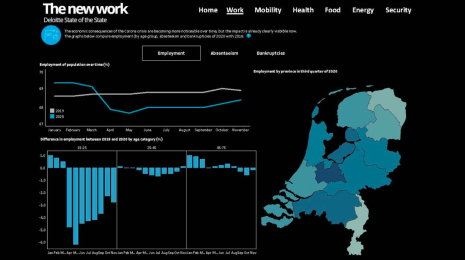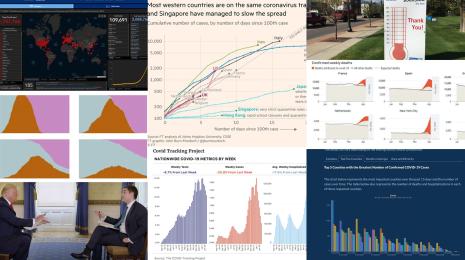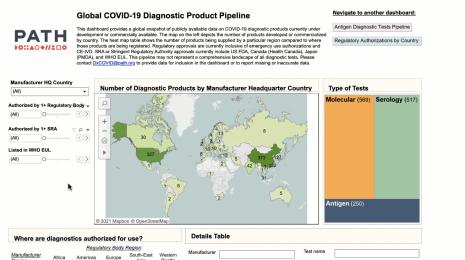Environmental leadership will be more in demand than ever after COVID-19. Here’s what you need to know to be prepared.

In just a few short months, COVID-19 has reshaped the world. As the novel coronavirus has spread, people have begun sheltering in place and practicing social distancing while numerous businesses have shuttered and the global economy has ground to a halt.
At this point, we don’t know how long COVID-19 will affect the status quo of how we live. But we do know that we can already see the impact it’s having in so many areas: the economy, our personal lives – and the environment. COVID-19 is a global health crisis, but it’s also part of the ongoing environmental crisis our world is facing. And it’s showing just how closely linked our economy and lifestyles are to the overall health of the planet.
As we move through the pandemic and begin to think about recovery, business leaders can place a pretty secure bet on the fact that the expectation for a strong and well-thought-out environmental strategy will be even stronger than it was before. As my colleague Suzanne DiBianca, Salesforce’s Chief Impact Officer, recently said, “We are facing numerous challenges now, but regardless of what else is happening in the world, the climate crisis is here, it’s real, and this is the decade where we need to act. As leaders, we need to be thinking about how we can continue to prioritise sustainability throughout this time and into the future. At Salesforce, the call for leadership and action in the environmental space – from our stakeholders, our communities and our employees – is clearer than ever amid the COVID-19 crisis.”
Learn more about Tableau Foundation’s work on the issue of climate action.
Leaders will have to be thinking proactively – starting now – about everything from normalising remote work to incentivising green transportation, to investing in sustainable sourcing and supply chain practices, to funding environmental restoration efforts. If this seems like a stretch from the situation we’re all in now, it’s not. The health of the planet is inextricably linked to the health and well-being of people and businesses across the globe. Leaders who are preparing now to address both with strong strategies and decision-making will set their businesses and their people up for success in the future.
Let’s dive into what there is to know:
Environmental leadership is more important than ever before
Sustainability has only grown in urgency in the past several years, and business and leadership strategies have reflected that: A 2019 Deloitte study found that over 63% of businesses surveyed have formal resource and sustainability goals in place, and over two thirds say they’re hearing demands from customers to increase their commitment to good environmental practices. It’s also increasingly in demand from employees, as climate-related walkouts at companies like Amazon have unfolded over the past year.
In the wake of COVID-19, businesses and elected officials alike will have to step up to address so many challenges: economic, political, interpersonal and more. But as UN Environment Programme Director Inger Andersen writes in an op-ed for the UN, leadership on environmental sustainability will be in increased demand. Human activity has already altered around 75% of the Earth’s surface, Andersen writes, and with that we’ve greatly increased our exposure to animal-borne diseases like COVID-19 – not to mention the devastating effects of climate change.
It will be up to our leaders to course-correct. “It is time to restore our forests, stop deforestation, invest in the management of protected areas and propel markets for deforestation-free products. Where the legal wildlife trade chain exists, we need to do a far better job of improving hygiene conditions. And of course, there is the urgent need to tackle the illegal wildlife trade, the fourth most common crime committed worldwide,” Andersen writes.
This link between planetary and human health has to guide the way leaders across the world make decisions going forwards after the current pandemic passes, she adds: “And as the engines of growth begin to rev up again, we need to see how prudent management of nature can be part of this ‘different economy’ that must emerge, one where finance and actions fuel green jobs, green growth and a different way of life, because the health of people and the health of planet are one and the same, and both can thrive in equal measure.”
What COVID-19 is telling us about the need for strong sustainability policies
So what steps can leaders take now to ensure the health of the planet and its people following this pandemic?
COVID-19 has already disrupted the way many businesses across the world operate. In the span of a few short weeks, workforces have had to go remote, offices have shuttered and commuting has been put on pause. Leaders have had to rise to the challenge of guiding their people through these changes, and many are now settling into this new way of operating.
These shifts are proving effective in slowing the spread of the virus, but they’re also having another effect: giving the planet a breather. When case numbers spiked and countries enacted stay-at-home or shelter-in-place orders, pollution levels and emissions dropped significantly. This happened in China, where the outbreak originated, and it’s happened in other countries and cities around the world.
Here’s what that looked like in China.
Data from satellites and other remote sensing devices show that where COVID-19 has spread, particularly in cities, carbon dioxide emissions, air pollution, congestion and related transport emissions have all but disappeared. In places where people are asked to stay put and not venture out unless absolutely necessary, data on pollution and transport-related emissions (which normally accounts for around 14% of greenhouse gas emissions) is taking a nosedive.

While it’s true that COVID-19 may bring about the first major drop – around 5% – in emissions in over half a century, this is not the way we want to be achieving it, Stanford University professor and Global Carbon Project chair Rob Jackson told Grist. “Millions of people out of work is not the way we want to reduce emissions,” he added. And it’s highly unlikely that these declines will last. As soon as places begin to lift stay-at-home sanctions, emissions are likely to climb back up again, as data from China shows.
For journalism at the intersection of COVID-19, climate, and data, visit Grist.org.
None of us want to be in a situation where we have to choose between business as usual and saving the planet. We’ve been given a clear proof of concept that it is possible to reduce emissions. What business leaders think about now is their role in avoiding the “bounceback” effect of pollution spiking back up when the pandemic passes.
For business leaders, this raises some questions, and also casts the measures many of them moved to enact so quickly weeks ago in a different light. Now that we’ve seen the effect of enabling employees to work from home and cutting down on commuting and emissions from keeping offices running at full capacity, what policies can we carry through to protect the planet after the pandemic passes?
Business leaders should start thinking now about what a climate action plan for their company could look like, informed by what we’ve learned from COVID-19. Can you establish a clear work-from-home policy, where possible, across the company? What could you as a leader do to encourage green transportation options, like cycling and public transport, to keep emissions from commuting low? Can you conduct an audit of your buildings to ensure that they’re operating at the highest efficiency standards?
For policymakers and elected officials, the World Bank notes that in the aftermath of the pandemic, one of the key focuses will be on stabilising the world and its economy in the long term. That means redesigning subsidies to shift dependence away from fossil fuels and toward renewable energy, and making significant investments in sustainable transit infrastructure and environmental remediation projects.
Across sectors, these are big shifts to be contemplating. But the coronavirus has already upended our business as normal. Leaders need to be thinking about the future and how to set us all up for success in our new reality.
Doing our part to invest in the health of the planet
Taking steps, as leaders, to implement strong environmental policies inside organisations now is critical. And more than ever, leaders are committing to the health and well-being of the planet beyond their own four walls.
In the past several years, business and investor support for environmental sustainability measures has continued to rise. With the introduction of the UN’s Sustainable Development Goals in 2015, many companies have used the 17 goals as a way to assess and improve their operations as both businesses and contributors to the overall well-being of the planet. In 2018, a report from PwC found that 50% of companies had selected several of the SDGs to prioritise, and 27% had embedded the goals into their business strategies. More than 90% of the 250 largest companies in the US produce a corporate sustainability report. It’s more important than ever that companies can show their commitment to goals that are larger than the scope of their own business, but critical for the long-term health of the planet.
That was true before COVID-19, and will be even more urgent after the pandemic passes. Data is showing that a driving force behind the emergence of the novel coronavirus was deforestation: as human industry and activity scales up and begins to encroach on natural ecosystems, opportunities for cross-contamination of viruses between animal species and humans skyrocket. If we don’t do anything to radically scale back the devastation of natural resources, and regenerate those we have already lost, we’re setting ourselves up for a repeat of the situation we’re in right now.
For business leaders, the link between COVID-19 and environmental degradation needs to be a call to action to support sustainability measures. Employees and investors alike are increasingly asking for business leaders to demonstrate a commitment to sustainability. In 2019, HBR found that sustainability was nearly universally “top of mind” for leading investors. And there are more opportunities than ever for companies to commit their resources to helping the planet. Salesforce’s CEO Marc Benioff, for instance, has championed the effort to plant 1 trillion trees across the planet to mitigate environmental losses, and DiBianca says that the company has pledged to plant 50,000 trees in honour of this year’s Earth Day. For leaders, joining on to rehabilitation efforts like this, and pledging to limit further damage along supply chains, is a way to show commitment towards ensuring the long-term health of their people and the planet.
COVID-19 has shown us just how much our actions – as individuals, businesses and communities – affect the planet on a daily basis. It’s also made it clear that unless we act now, we run the risk of exposing ourselves to further threats in the future. Business leaders now have an opportunity to integrate everything we have learned here and work together to enact strategies – within their own operations, and in concert with governments, nonprofits and each other – to ensure that we emerge out of this crisis with a plan for sustainability.








